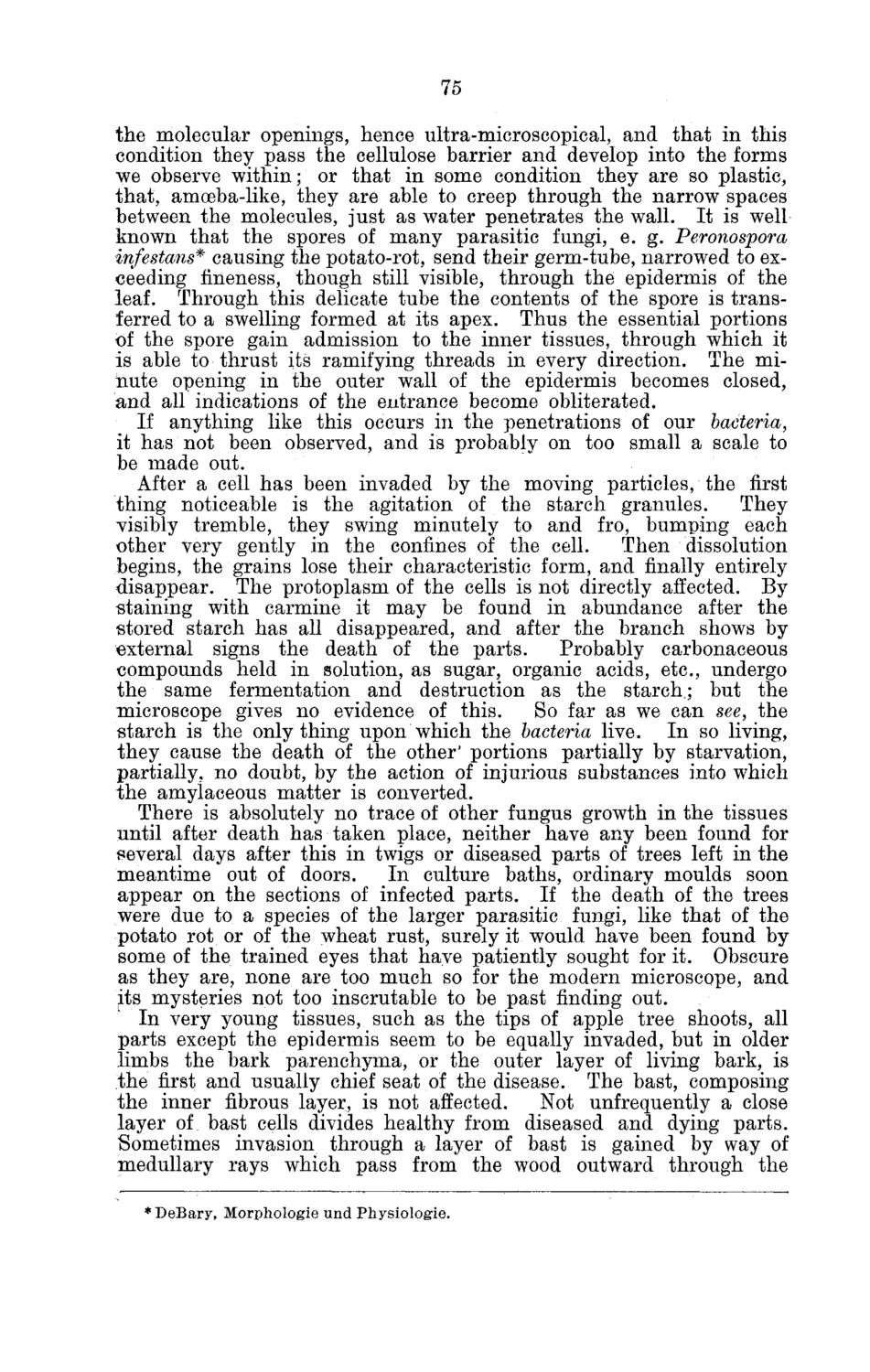| |
| |
Caption: Board of Trustees Minutes - 1880
This is a reduced-resolution page image for fast online browsing.

EXTRACTED TEXT FROM PAGE:
75 the molecular openings, hence ultra-microscopical, and that in this condition they pass the cellulose barrier and develop into the forms we observe within; or that in some condition they are so plastic, that, amceba-like, they are able to creep through the narrow spaces between the molecules, just as water penetrates the wall. It is well known that the spores of many parasitic fungi, e. g. Peronospora infestans* causing the potato-rot, send their germ-tube, narrowed to exceeding fineness, though still visible, through the epidermis of the leaf. Through this delicate tube the contents of the spore is transferred to a swelling formed at its apex. Thus the essential portions of the spore gain admission to the inner tissues, through which it is able to thrust its ramifying threads in every direction. The minute opening in the outer wall of the epidermis becomes closed, and all indications of the entrance become obliterated. If anything like this occurs in the penetrations of our bacteria, it has not been observed, and is probably on too small a scale to be made out. After a cell has been invaded by the moving particles, the first thing noticeable is the agitation of the starch granules. They visibly tremble, they swing minutely to and fro, bumping each other very gently in the confines of the cell. Then dissolution begins, the grains lose their characteristic form, and finally entirely disappear. The protoplasm of the cells is not directly affected. By staining with carmine it may be found in abundance after the stored starch has all disappeared, and after the branch shows by external signs the death of the parts. Probably carbonaceous compounds held in solution, as sugar, organic acids, etc., undergo the same fermentation and destruction as the starch.; but the microscope gives no evidence of this. So far as we can see, the starch is the only thing upon which the bacteria live. In so living, they cause the death of the other' portions partially by starvation, partially, no doubt, by the action of injurious substances into which the amylaceous matter is converted. There is absolutely no trace of other fungus growth in the tissues until after death has taken place, neither have any been found for several days after this in twigs or diseased parts of trees left in the meantime out of doors. In culture baths, ordinary moulds soon appear on the sections of infected parts. If the death of the trees were due to a species of the larger parasitic fungi, like that of the potato rot or of the wheat rust, surely it would have been found by some of the trained eyes that have patiently sought for it. Obscure as they are, none are too much so for the modern microscope, and its mysteries not too inscrutable to be past finding out. In very young tissues, such as the tips of apple tree shoots, all parts except the epidermis seem to be equally invaded, but in older limbs the bark parenchyma, or the outer layer of living bark, is the first and usually chief seat of the disease. The bast, composing the inner fibrous layer, is not affected. Not unfrequently a close layer of bast cells divides healthy from diseased and dying parts. Sometimes invasion through a layer of bast is gained by way of medullary rays which pass from the wood outward through the DeBary, Morphologie und Physiologie.
| |